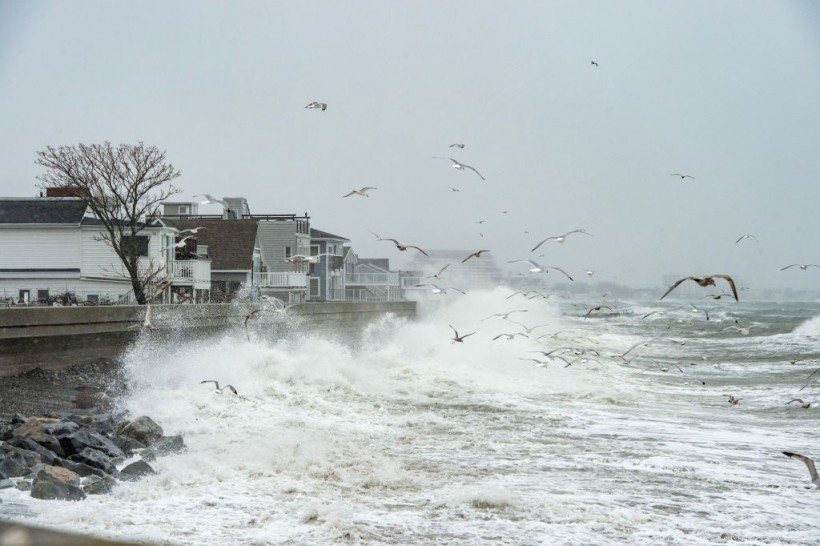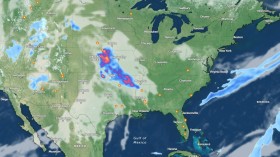The nor'easter wreaking havoc across the Northeast and New England regions of the United States has led to over 300,000 power outages, according to local reports.
The storm system has brought powerful snow, heavy rain, and high winds, leading to coastal flooding across the country's East Coast. It has affected millions of travelers as it disrupted both local and international flights in the mainland US.
Latest reports indicate that both outbound and inbound flights were either canceled or delayed on Tuesday, March 14. Ground travel is also being proven to be hazardous due to low visibility caused by potential whiteout conditions from the winter storm. There were no immediate reports of deaths or fatalities from the nor'easter.
The storm is the first nor'easter of the season in the US, which braced several winter storms and polar vortex-driven Arctic cold fronts earlier this year. Meteorologists expect the continuance of the weather system along the region by at least Wednesday, March 15. In the coming hours, further disruption to travel is likely to continue.
Infrastructure and Travel Disruption

Seagulls fly above as waves hammer the sea wall and blasted coastal homes with water and rocks in Winthrop, Massachusetts on March 14, 2023. - The noreaster storm brought high winds that created large waves which caused minor costal flooding.
A number of areas from upstate New York to southern New England experienced snowfall accumulations of at least 2 feet since Monday evening, March 13. Meanwhile, parts of Maine, New Hampshire, and Vermont saw 6 to 12 inches on the same period, according to the Weather Prediction Center, as cited by CNN.
Several dozens of thousands of customers were left without electricity in multiple states, including New Hampshire, Maine, New York, and Massachusetts, according to the utility monitoring website PowerOutage.US
In terms of domestic and international flights in the US, there were a total of 950 delays and 1,017 cancellations across the country as of Wednesday morning, according to the flight monitoring website FlightAware.
East Coast's storm came after heavy snow in California caused some residents to be trapped in their homes, leading to multiple fatalities.
Also Read: Nor'easter Develops Off the Atlantic Coast, Eyes for Boston, New England: Forecast Says
Nor'easter Storm
According to the National Weather Service (NWS), a nor'easter is a type of storm that forms along the East Coast of North America. Its name comes from the fact that winds during this phenomenon originates over the coastal area of the Northeast.
The coverage of such storms progresses in a northeastward direction, reaching intensity near New England and the Maritime Provinces of Canada. They typically bring precipitation in the form of either heavy rain or snow, the NWS explains.
In particular, Nor'easters form within 100 miles along the coast from New Jersey and Georgia, an area that is a perfect sport for the formation of storms, according to the National Oceanic and Atmospheric Administration (NOAA).
The NOAA explains the polar jet stream blows cold air southward away from Canada and eastward into the warm Atlantic Ocean, thanks to the warm ocean current of the Gulf Stream. A low pressure forms when the cold air and warm water converges, causing the development of clouds and a storm.
Related Article: Nor'easter Alert: New England Residents Prepare as Storm Could Intensify Into Bomb Cyclone
© 2024 NatureWorldNews.com All rights reserved. Do not reproduce without permission.


![Roundworms with Short Memories 'Stop Forgetting' When Frozen or Given Lithium [Study]](https://1471793142.rsc.cdn77.org/data/thumbs/full/70295/280/157/50/40/roundworms-with-short-memories-stop-forgetting-when-frozen-or-given-lithium-study.jpg)


